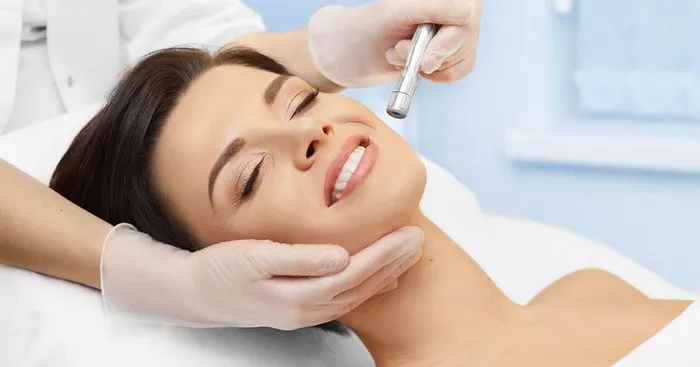Microdermabrasion and Botox are two popular cosmetic treatments that can help to improve the appearance of the skin. Microdermabrasion is a non-invasive procedure that uses a diamond-tipped wand to exfoliate the top layer of the skin, while Botox is a neurotoxin that is injected into the skin to relax facial muscles and reduce the appearance of wrinkles. Many patients wonder if it is safe to get Botox after microdermabrasion. In this article, we will explore the question “Can I get Botox after microdermabrasion?” and discuss the factors that should be considered.
Understanding Microdermabrasion
Microdermabrasion is a non-invasive cosmetic treatment that uses a diamond-tipped wand to exfoliate the top layer of the skin. The procedure is designed to remove dead skin cells, unclog pores, and stimulate the production of new skin cells. Microdermabrasion can be used to treat a variety of skin concerns, including fine lines, wrinkles, acne, and hyperpigmentation.
The procedure is quick and relatively painless, with most patients experiencing only mild discomfort during the treatment. Microdermabrasion can be performed on the face, neck, chest, and hands.
Understanding Botox
Botox is a neurotoxin that is injected into the skin to relax facial muscles and reduce the appearance of wrinkles. The treatment works by blocking the signals that are sent from the nerves to the muscles, which prevents the muscles from contracting and causing wrinkles.
Botox is most commonly used to treat wrinkles on the forehead, between the eyebrows, and around the eyes. The treatment is quick and relatively painless, with most patients experiencing only mild discomfort during the injections.
Can I Get Botox After Microdermabrasion?
The answer to this question depends on several factors, including the timing of the treatments and the patient’s individual needs and preferences.
Timing of the Treatments
In general, it is safe to get Botox after microdermabrasion. However, it is important to wait at least two weeks between the two treatments to ensure that the skin has fully healed from the microdermabrasion procedure.
Getting Botox too soon after microdermabrasion can increase the risk of side effects, such as bruising, swelling, and infection. It can also interfere with the results of the microdermabrasion treatment, as the Botox injections can cause the skin to become more sensitive and prone to irritation.
Individual Needs and Preferences
The decision to get Botox after microdermabrasion should be based on the individual patient’s needs and preferences. Some patients may prefer to wait longer than two weeks between the treatments to ensure that their skin has fully healed and that the results of the microdermabrasion treatment are not compromised.
Other patients may be more comfortable getting Botox sooner after microdermabrasion, especially if they have a special event or occasion coming up and want to look their best.
Factors to Consider
Before getting Botox after microdermabrasion, there are several factors that should be considered. These include:
The Patient’s Skin Type
The patient’s skin type can affect how well the skin responds to both microdermabrasion and Botox. Patients with sensitive skin may be more prone to irritation and side effects from both treatments, and may need to wait longer between the treatments to ensure that the skin has fully healed.
The Patient’s Age
The patient’s age can also affect how well the skin responds to both treatments. Younger patients may have more resilient skin that is better able to handle both microdermabrasion and Botox, while older patients may need to wait longer between the treatments to ensure that their skin has fully healed.
The Patient’s Medical History
The patient’s medical history can also affect how well the skin responds to both treatments. Patients with a history of skin conditions, such as eczema or psoriasis, may be more prone to irritation and side effects from both treatments, and may need to wait longer between the treatments to ensure that the skin has fully healed.
The Patient’s Goals
The patient’s goals for the treatments should also be considered. If the patient is primarily interested in reducing the appearance of wrinkles, Botox may be a better option than microdermabrasion. However, if the patient is interested in improving the overall texture and tone of their skin, microdermabrasion may be a better option.
Conclusion
Microdermabrasion and Botox are two popular cosmetic treatments that can help to improve the appearance of the skin. While it is generally safe to get Botox after microdermabrasion, it is important to wait at least two weeks between the treatments to ensure that the skin has fully healed. Patients should also consider their individual needs and preferences, as well as factors such as their skin type, age, medical history, and goals for the treatments. By taking these factors into consideration, patients can make an informed decision about whether to get Botox after microdermabrasion.

